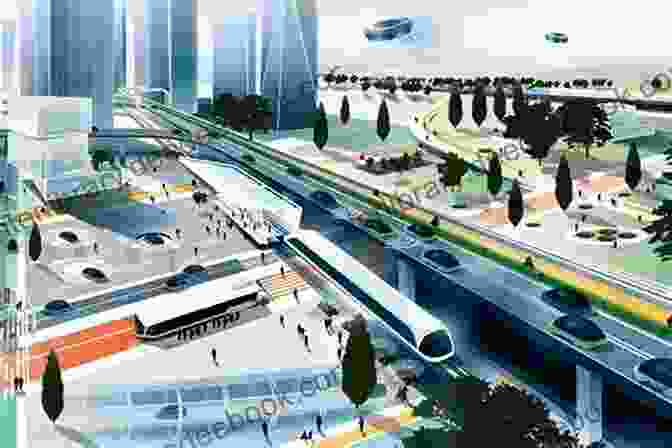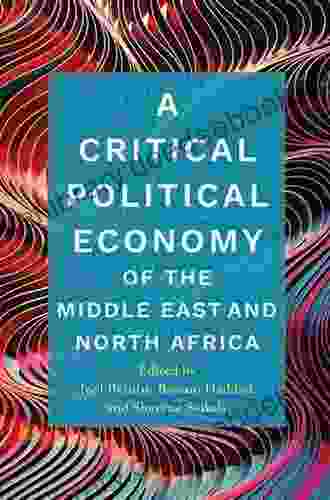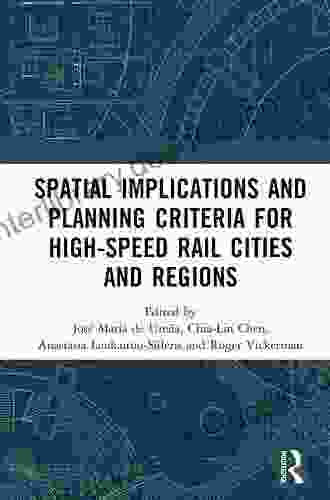Spatial Implications and Planning Criteria for High-Speed Rail Cities: A Comprehensive Guide


High-speed rail (HSR) is a mode of transportation that has transformed the way we travel. With its ability to connect cities at speeds of up to 350 kilometers per hour (220 miles per hour),HSR has reduced travel times, increased connectivity, and spurred economic growth in regions around the world.
4.5 out of 5
| Language | : | English |
| File size | : | 12830 KB |
| Screen Reader | : | Supported |
| Print length | : | 246 pages |
As HSR lines are planned and built, it is crucial to consider the spatial implications and planning criteria necessary to create sustainable and livable HSR cities. This article aims to provide a comprehensive guide to the spatial implications and planning criteria for HSR cities, addressing issues related to land use, urban form, and accessibility.
1. Land Use Implications
The development of HSR lines and stations has a significant impact on land use patterns in surrounding areas. HSR stations act as major transportation hubs, attracting commercial, residential, and mixed-use developments. This can lead to:
- Increased land values and development pressure around HSR stations
- Redevelopment of existing neighborhoods and the creation of new urban districts
- Displacement of low-income residents and businesses
To mitigate these impacts, cities should adopt comprehensive land use plans that guide development around HSR stations. These plans should include zoning regulations, incentives for affordable housing, and measures to protect historic and cultural resources.
2. Urban Form Implications
HSR stations can serve as catalysts for urban regeneration and the revitalization of declining areas. By providing high-speed connections to major cities, HSR can attract new residents, businesses, and investments to these areas. This can lead to:
- The creation of new urban centers and the expansion of existing ones
- Increased density and mixed-use development around HSR stations
- Improved pedestrian and bicycle connectivity
To shape the urban form of HSR cities, cities should adopt design guidelines and urban design plans that promote walkability, bikeability, and a mix of uses. These plans should encourage the development of compact, transit-oriented communities around HSR stations.
3. Accessibility Implications
Accessibility is a key consideration for HSR cities. HSR stations should be located in central, well-connected areas to maximize their accessibility to residents, businesses, and visitors. This can be achieved by:
- Integrating HSR stations with other transportation modes, such as local and regional rail, buses, and taxis
- Providing pedestrian and bicycle access to HSR stations
- Ensuring that HSR stations are accessible to people with disabilities
By improving accessibility to HSR stations, cities can ensure that the benefits of high-speed rail are shared by all members of the community.
4. Planning Criteria for HSR Cities
In addition to the spatial implications discussed above, there are several planning criteria that cities should consider when planning for HSR. These criteria include:
- Transit-oriented development (TOD): TOD promotes the development of compact, mixed-use communities around HSR stations. This helps to reduce car dependence and increase walkability and bikeability.
- Smart growth principles: Smart growth principles emphasize sustainable development practices, such as reducing sprawl, promoting infill development, and preserving open space.
- Public-private partnerships (PPPs): PPPs can be used to finance and develop HSR projects and related infrastructure. PPPs can also help to share the risks and benefits of HSR development.
- Community engagement: It is important to engage with the community throughout the planning and development process for HSR cities. This helps to ensure that the needs and concerns of residents are taken into account.
5. Case Studies of HSR Cities
There are several successful examples of HSR cities around the world. These cities have adopted innovative planning strategies to mitigate the spatial implications of HSR and create sustainable and livable urban environments.
- Tokyo, Japan: Tokyo's HSR network is one of the most extensive in the world. The city has adopted a TOD approach to development around HSR stations, resulting in compact, mixed-use communities with excellent pedestrian and bicycle infrastructure.
- Madrid, Spain: Madrid's HSR station is located in the heart of the city, providing easy access to the city's historical and cultural attractions. The station is integrated with other transportation modes, making it a convenient hub for travelers.
- Guangzhou, China: Guangzhou's HSR network has spurred the development of new urban centers and the revitalization of declining areas. The city has adopted smart growth principles to promote sustainable development and reduce sprawl.
High-speed rail has the potential to transform cities and regions by increasing connectivity, reducing travel times, and spurring economic growth. However, it is important to carefully consider the spatial implications and planning criteria necessary to create sustainable and livable HSR cities.
By adopting comprehensive land use plans, design guidelines, and urban design plans, cities can shape the urban form of HSR cities and promote walkability, bikeability, and a mix of uses. By improving accessibility to HSR stations, cities can ensure that the benefits of high-speed rail are shared by all members of the community.
By following the planning criteria outlined in this article, cities can create HSR cities that are sustainable, livable, and connected.
4.5 out of 5
| Language | : | English |
| File size | : | 12830 KB |
| Screen Reader | : | Supported |
| Print length | : | 246 pages |
Do you want to contribute by writing guest posts on this blog?
Please contact us and send us a resume of previous articles that you have written.
 Novel
Novel Chapter
Chapter Reader
Reader Library
Library Paperback
Paperback Magazine
Magazine Newspaper
Newspaper Paragraph
Paragraph Sentence
Sentence Bookmark
Bookmark Shelf
Shelf Glossary
Glossary Bibliography
Bibliography Foreword
Foreword Preface
Preface Annotation
Annotation Scroll
Scroll Codex
Codex Library card
Library card Narrative
Narrative Autobiography
Autobiography Memoir
Memoir Encyclopedia
Encyclopedia Thesaurus
Thesaurus Narrator
Narrator Resolution
Resolution Librarian
Librarian Card Catalog
Card Catalog Stacks
Stacks Archives
Archives Periodicals
Periodicals Study
Study Research
Research Scholarly
Scholarly Lending
Lending Academic
Academic Journals
Journals Reading Room
Reading Room Rare Books
Rare Books Reading List
Reading List Elliot Haspel
Elliot Haspel Davide Morosinotto
Davide Morosinotto Rosemary Say
Rosemary Say Rosie Clarke
Rosie Clarke B E Baker
B E Baker Crystal Lewis
Crystal Lewis Paul Brown
Paul Brown Dave Holloway
Dave Holloway Jacques Berlinerblau
Jacques Berlinerblau Glenn A Knoblock
Glenn A Knoblock Italo Svevo
Italo Svevo Paula Steel
Paula Steel Eric Peatman
Eric Peatman David Lee Roth
David Lee Roth Carlos Prieto
Carlos Prieto Sharlene Leong
Sharlene Leong T Y Somerville
T Y Somerville Wayne Lemmons
Wayne Lemmons Lucille Lok Sun Ngan
Lucille Lok Sun Ngan William Gibbons
William Gibbons
Light bulbAdvertise smarter! Our strategic ad space ensures maximum exposure. Reserve your spot today!

 Ernest PowellScarpology: Mapping the Mandolin Fretboard and Embarking on Improvisational...
Ernest PowellScarpology: Mapping the Mandolin Fretboard and Embarking on Improvisational... Dallas TurnerFollow ·16.4k
Dallas TurnerFollow ·16.4k Wesley ReedFollow ·14.9k
Wesley ReedFollow ·14.9k August HayesFollow ·6.6k
August HayesFollow ·6.6k Manuel ButlerFollow ·16.1k
Manuel ButlerFollow ·16.1k Andres CarterFollow ·11.5k
Andres CarterFollow ·11.5k Henry Wadsworth LongfellowFollow ·18.6k
Henry Wadsworth LongfellowFollow ·18.6k Jett PowellFollow ·15.7k
Jett PowellFollow ·15.7k Allan JamesFollow ·8.3k
Allan JamesFollow ·8.3k

 Bo Cox
Bo CoxDiscover the Enchanting Allure of Collingwood, Ontario,...
Nestled amidst the breathtaking landscape of...

 Ralph Ellison
Ralph EllisonThe Street of Clocks Poems: A Poetic Journey Through Time
Welcome to The Street...

 Dwight Blair
Dwight BlairCritical Political Economy of the Middle East and North...
The Middle East and...

 Deion Simmons
Deion SimmonsPerfect Strategies For Painting Amazing Marine Creatures...
Gouache is a...

 Hugh Bell
Hugh BellThe American Republic: Constitution, Tendencies, and...
The American Republic,...
4.5 out of 5
| Language | : | English |
| File size | : | 12830 KB |
| Screen Reader | : | Supported |
| Print length | : | 246 pages |











